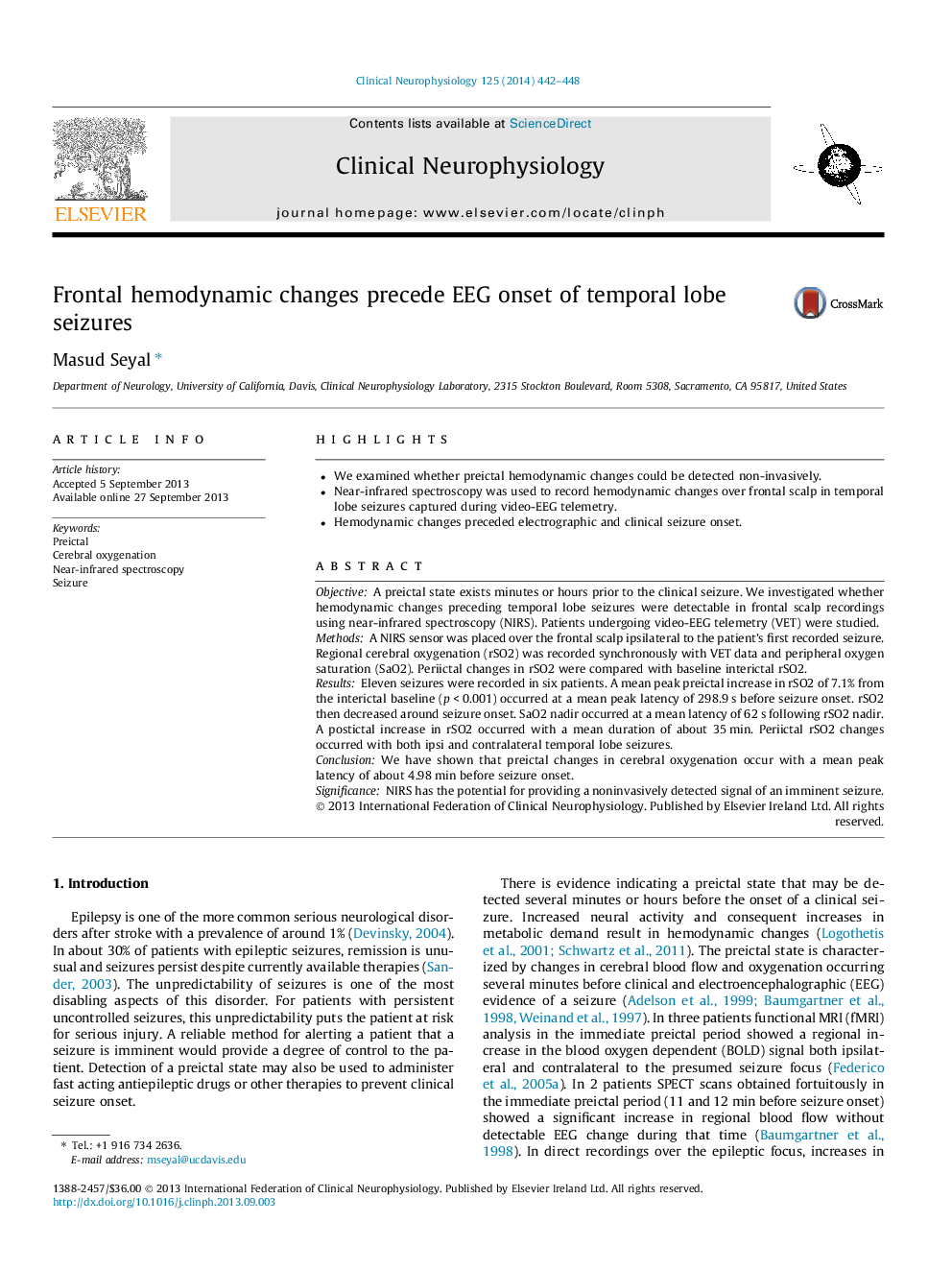| Article ID | Journal | Published Year | Pages | File Type |
|---|---|---|---|---|
| 3043932 | Clinical Neurophysiology | 2014 | 7 Pages |
•We examined whether preictal hemodynamic changes could be detected non-invasively.•Near-infrared spectroscopy was used to record hemodynamic changes over frontal scalp in temporal lobe seizures captured during video-EEG telemetry.•Hemodynamic changes preceded electrographic and clinical seizure onset.
ObjectiveA preictal state exists minutes or hours prior to the clinical seizure. We investigated whether hemodynamic changes preceding temporal lobe seizures were detectable in frontal scalp recordings using near-infrared spectroscopy (NIRS). Patients undergoing video-EEG telemetry (VET) were studied.MethodsA NIRS sensor was placed over the frontal scalp ipsilateral to the patient’s first recorded seizure. Regional cerebral oxygenation (rSO2) was recorded synchronously with VET data and peripheral oxygen saturation (SaO2). Periictal changes in rSO2 were compared with baseline interictal rSO2.ResultsEleven seizures were recorded in six patients. A mean peak preictal increase in rSO2 of 7.1% from the interictal baseline (p < 0.001) occurred at a mean peak latency of 298.9 s before seizure onset. rSO2 then decreased around seizure onset. SaO2 nadir occurred at a mean latency of 62 s following rSO2 nadir. A postictal increase in rSO2 occurred with a mean duration of about 35 min. Periictal rSO2 changes occurred with both ipsi and contralateral temporal lobe seizures.ConclusionWe have shown that preictal changes in cerebral oxygenation occur with a mean peak latency of about 4.98 min before seizure onset.SignificanceNIRS has the potential for providing a noninvasively detected signal of an imminent seizure.
